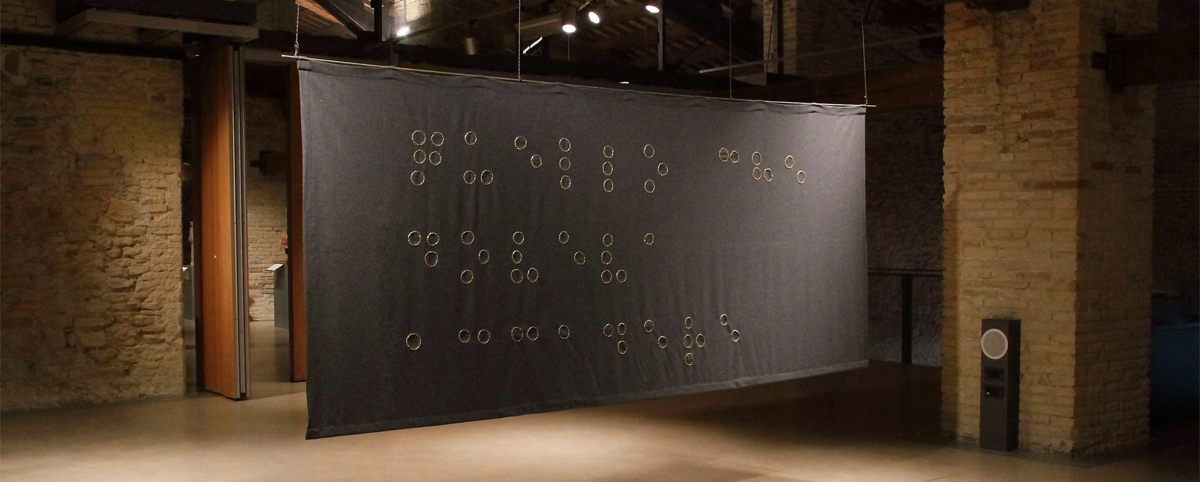“What had to happen”
Posted in Exhibitions on 16 February 2021

A personal intervention with several voices by Giovanni Gaggia
curated by Stefano Verri
from 27 December 2020
Museo Tattile Statale Omero
The 20th century and Contemporary area of the Museo Omero opens its doors to an experience of art as civic memory, hosting a work by Giovanni Gaggia entitled "What had to happen".
It takes the form of a tapestry created by the artist and performer from Le Marche, on the fortieth anniversary of the Ustica massacre, which theoretically closes a cycle that has occupied Giovanni Gaggia for ten years.
The Ustica massacre also affected Ancona, the native city of the Davanzali family, shipowners and owners of the Itavia airline whose DC-9 was shot down on June 27, 1980, in circumstances which have not yet been fully explained.
81 people died in the tragedy which changed the fate of many families, leaving behind a trail of secrets and pain.
Giovanni Gaggia's work is an intimate journey that evolves in the slowness and techniques of embroidery, transforming artistic action into an act of meditation, where the artist sublimates the facts that are fading into history and politics, and highlights the plurality of the stories, voices, lives, feelings.
Aldo Grassini, President of the Museo Omero, welcomed the work with these words: "Art is a game that searches for beauty. When art meets civic commitment, a twofold emotion is ignited: play and commotion. Art is the game of inventing truth; truth is commotion that does not permit play.
But the pleasure of art humanizes the terrible, harsh memory of the Ustica tragedy; the game of art merges with a meditation on profound values, absolute warnings and imperative appeals, generating a fascinating, vertigo-like, pleasure, of walking along a thread that stretches between the memory of the inhuman and the light of justice regained, in the citizen's conscience at least."
The work is accompanied by a series of audio contributions. People active in the world of Italian art and culture reflect on the relationship between art and memory.
At the end of the exhibition, the work will be formally enclosed in a metal tube bearing a Braille inscription and will remain at the Museo Omero.
